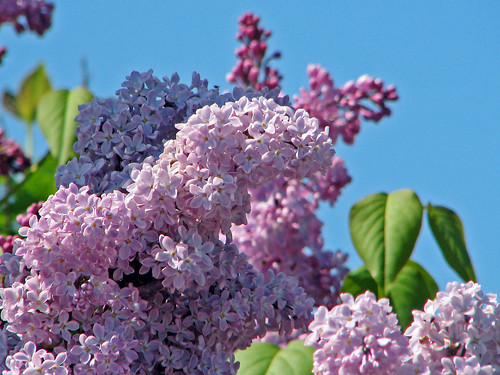lilac with butterfly by andrealeev
I have planted all my lilacs near some other big shrub or tree because my property is mostly wooded or has something growing on it- I have little choice of where to plant plants that I want. I know that lilacs do NOT like their roots crowded; but I have few options. I had planted the lilac that is blooming near the Rose of Sharon when they were little, so though they are all huge, perhaps the roots would have had a better chance to establish themselves when the shrubs were all small.
The lilac that has a few flowers is near a crape myrtle and who knows what size the crape myrtle roots are (compared to the Rose of Sharon roots.) I do wish someone would do a study of roots of plants and have diagrams and size charts so we gardeners can know what is underground as well as what we can see.










